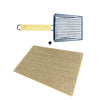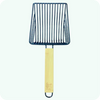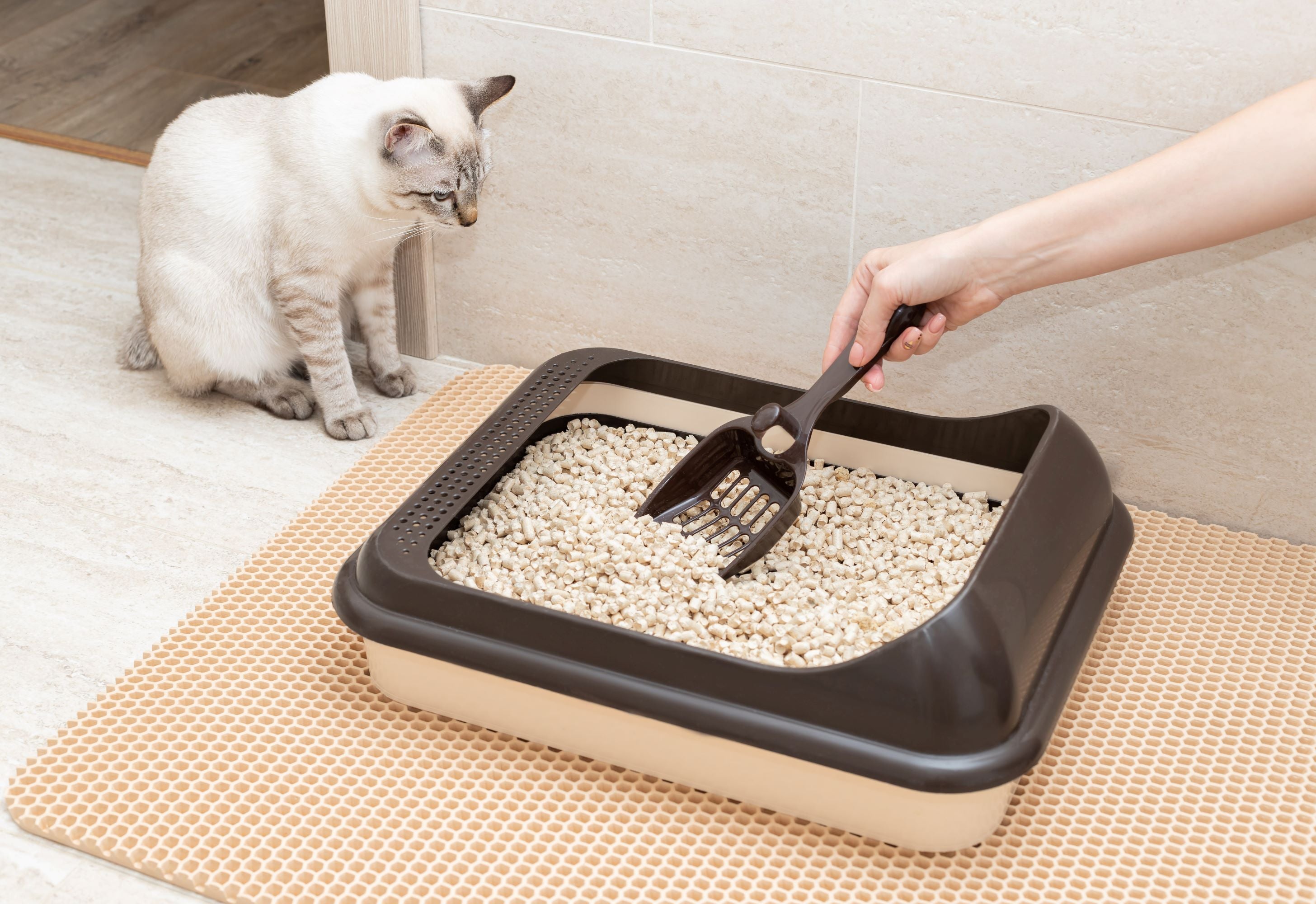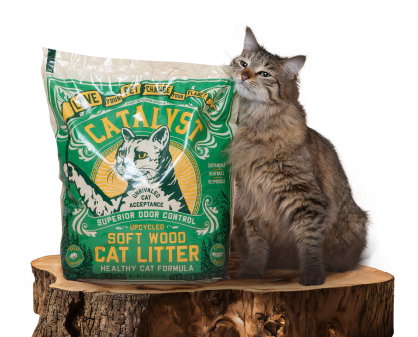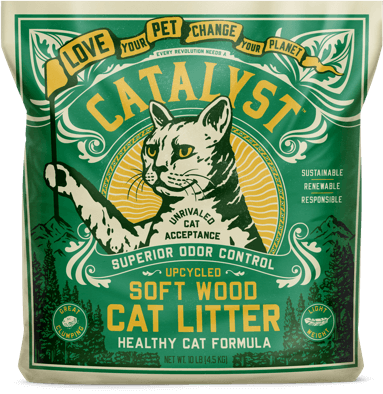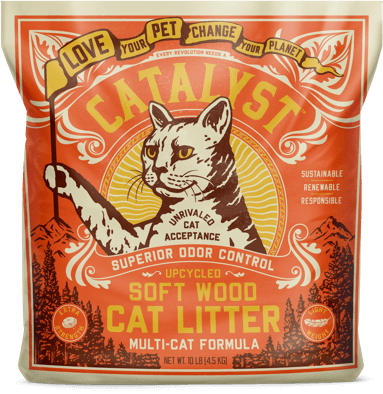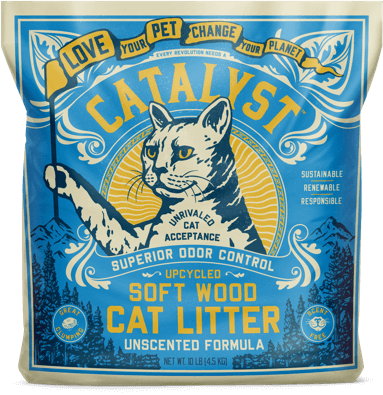We know you love your cat – you’re reading a blog about cat litter right now!
You want the best for your furry friends… and the price tags on cat products can be downright shocking! This is especially true for litter, and even more so if you’re a first-time fur baby parent.
How is cat litter made?
Cat litter comes in a variety of forms, from silica crystals to paper pellets to pinewood chips or clay. There are pros and cons with each type, and the ultimate choice depends on what a pet parent and their feline friends need and want in a cat litter.
However, there are certain factors that every litter must contend with when price is considered. Here’s the scoop:
- Raw Materials and Manufacturing
Raw material costs and manufacturing methodology directly impact the price of cat litter. Raw materials may be hard to extract or difficult to find or transport, upping the price of each bag. For example, clay litter involves mining, processing, and refining the clay minerals, which in turn requires labor, machinery, and energy inputs and costs. Paper litter involves collecting and processing paper materials. Plant-based litter creation includes cultivation, harvesting, transportation and processing of crops at the plant where the litter is made. Silica gel litter undergoes specialized manufacturing to create silica beads. Wood-based litters undergo a compression and treatment process also.
These raw materials and manufacturing processes contribute to the overall cost of production, which is directly related to the price of the litter. More manufacturing and more materials result in a higher price tag. Energy costs can fluctuate as well, and as they increase, they can be passed onto consumers.
- Packaging
Cat litter packaging is also included in the overall cost. Packaging is designed to ensure product freshness, prevent leaks and loss of material, and provide convenience for buyers. Sturdy packaging materials, such as plastic bags or containers, incur additional expenses, both monetarily and because of the sustainability tradeoff. Some bags are bulky and heavy but require less packaging. Others are smaller and compact for consumer ease but require overall more packaging in the form of multiple bags. Bags may be compostable or recyclable, which is great for the planet, though these features often come at a higher price point.
- Storage and Transportation
There is an entire logistical side to the cat litter industry, which involves transportation, storage, and distribution costs. The heavier the cat litter, the more energy required for transport. The larger the bags, the more storage space is needed before shipment and delivery. This can often be the largest cost when it comes to your cat litter.
- Marketing and Branding
You may not have considered the immense effort that goes into marketing cat litter. There are a ton of companies competing for your business, and nearly endless effort goes into consumer research and related activities to determine how to best reach prospective buyers. Established brands with excellent product reviews regarding their high-quality cat litter will still sell at higher prices. Customers are willing to pay more when they’re guaranteed superior performance and a positive experience for cat and owner.
- Inflation/cost of living
Just like groceries, energy, and gas costs, the price of litter can fluctuate based on economic conditions. Increasing raw material costs, inflation, and a variety of other factors can and will raise the final price of a bag of cat litter.
- Consumer demands
Savvy consumers like yourself care a lot about the comfort of their feline friends. They want – and often demand – the best of everything for their kitties. Many eco-conscious consumers also want the best for the people and planet, not just their pets. The desire for cat litter that works well, is sustainable, and does no harm to humans and the earth is possible, and it comes with a higher price tag than traditional litter
- Investments in research, development, and quality control.
As mentioned above, customer desires drive a lot of the research and development efforts when it comes to making cat litter. Teams of highly accomplished chemists, engineers, and others spend time and effort in the lab working to make the best cat litter possible. This is not inexpensive, and it requires specialized scientific knowledge. Even minor changes to a formula can have huge effects on product efficacy and performance.
There are other factors at play as well, though the above points are some of the biggies when it comes to untangling the reasons cat litter can be so darn pricey. However, at Catalyst Pet, we’re working hard to bust down the barriers that stand between consumers and an affordable, sustainable litter. If you haven’t tried Catalyst yet, do yourself (and your kitty and the planet) a favor and give us a try!
